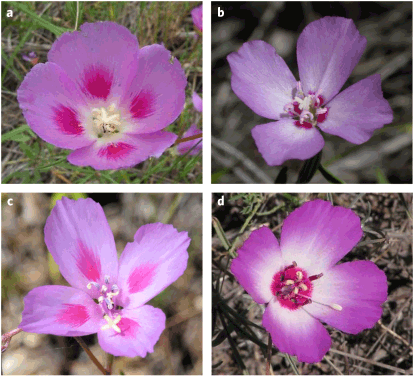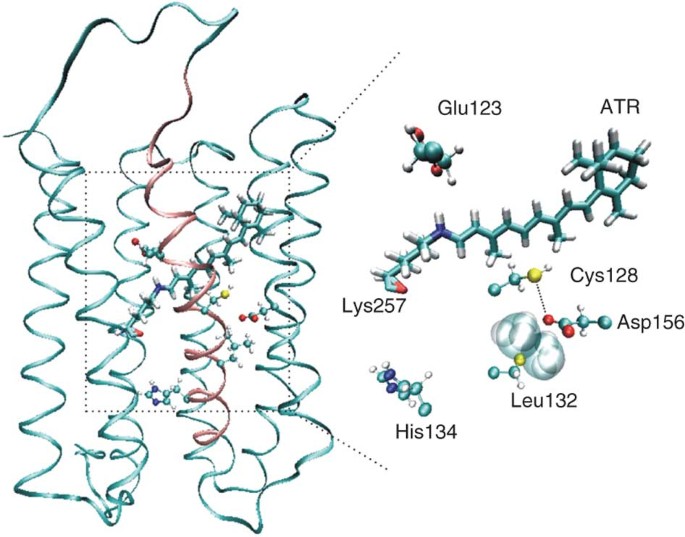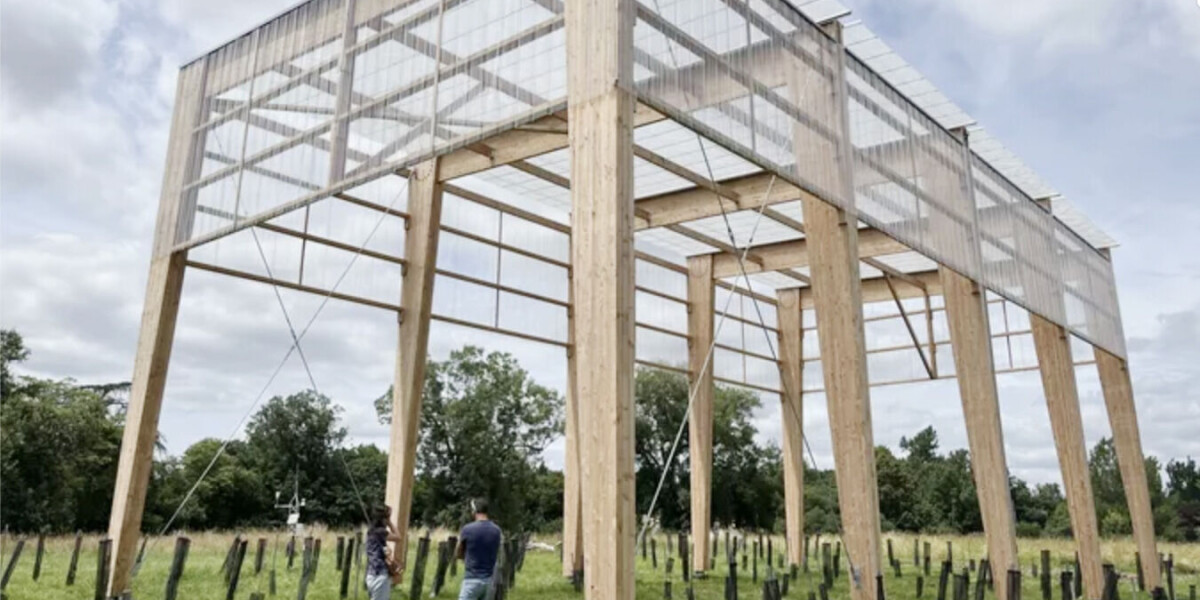
- Select a language for the TTS:
- UK English Female
- UK English Male
- US English Female
- US English Male
- Australian Female
- Australian Male
- Language selected: (auto detect) - EN
Play all audios:
ABSTRACT A major premise in evolutionary developmental biology is that regulatory changes, often involving _cis_-regulatory elements, are responsible for much morphological evolution. This
premise is supported by recent investigations of animal development, but information is just beginning to accumulate regarding whether it also applies to the evolution of plant
morphology1,2,3,4. Here, we identify the genetic differences between species in the genus _Clarkia_ that are responsible for evolutionary change in an ecologically important element of
floral colour patterns: spot position. The evolutionary shift in spot position was due to two simple genetic changes that resulted in the appearance of a transcription factor binding site
mutation in the _R2R3 Myb_ gene that changes spot formation. These genetic changes caused _R2R3 Myb_ to be activated by a different transcription factor that is expressed in a different
position in the petal. These results suggest that the regulatory rewiring paradigm is as applicable to plants as it is to animals, and support the hypothesis that _cis_-regulatory changes
may often play a role in plant morphological evolution. Access through your institution Buy or subscribe This is a preview of subscription content, access via your institution ACCESS OPTIONS
Access through your institution Access Nature and 54 other Nature Portfolio journals Get Nature+, our best-value online-access subscription $32.99 / 30 days cancel any time Learn more
Subscribe to this journal Receive 12 digital issues and online access to articles $119.00 per year only $9.92 per issue Learn more Buy this article * Purchase on SpringerLink * Instant
access to full article PDF Buy now Prices may be subject to local taxes which are calculated during checkout ADDITIONAL ACCESS OPTIONS: * Log in * Learn about institutional subscriptions *
Read our FAQs * Contact customer support SIMILAR CONTENT BEING VIEWED BY OTHERS COMPARATIVE TRANSCRIPTOMICS REVEALS COMMONALITIES AND DIFFERENCES IN THE GENETIC UNDERPINNINGS OF A FLORAL
DIMORPHISM Article Open access 01 December 2022 DEVELOPMENTAL PHYLOTRANSCRIPTOMICS IN GRAPEVINE SUGGESTS AN ANCESTRAL ROLE OF SOMATIC EMBRYOGENESIS Article Open access 20 February 2025
STRUCTURAL VARIATION AT THE MAIZE _WUSCHEL1_ LOCUS ALTERS STEM CELL ORGANIZATION IN INFLORESCENCES Article Open access 22 April 2021 CHANGE HISTORY * _ 26 JUNE 2020 An amendment to this
paper has been published and can be accessed via a link at the top of the paper. _ REFERENCES * Wray, G. A. The evolutionary significance of _cis_-regulatory mutations. _Nat. Rev. Genet._ 8,
206–216 (2007). Article CAS PubMed Google Scholar * Carroll, S. B. Evo-devo and an expanding evolutionary synthesis: a genetic theory of morphological evolution. _Cell_ 134, 25–36
(2008). Article CAS PubMed Google Scholar * Wittkopp, P. J. & Kalay, G. _Cis_-regulatory elements: molecular mechanisms and evolutionary processes underlying divergence. _Nat. Rev.
Genet._ 13, 59–69 (2011). Article PubMed Google Scholar * Martik, M. L., Lyons, D. C. & McClay, D. R. Developmental gene regulatory networks in sea urchins and what we can learn from
them. _F1000Research_ 5, 203 (2016). Article Google Scholar * Della Pina, S., Souer, E. & Koes, R. Arguments in the evo-devo debate: say it with flowers!. _J. Exp. Botany_ 65,
2231–2242 (2014). Article Google Scholar * Specht, C. D. & Howarth, D. G. Adaptation in flower form: a comparative evodevo approach. _New Phytol._ 206, 74–90 (2015). Article PubMed
Google Scholar * Arnaud, N. et al. The same regulatory point mutation changed seed-dispersal structures in evolution and domestication. _Curr. Biol._ 21, 1215–1219 (2011). Article CAS
PubMed Google Scholar * Doebley, J. & Lukens, L. transcriptional regulators and the evolution of plant form. _Plant Cell._ 10, 1075–1082 (1998). Article CAS PubMed PubMed Central
Google Scholar * Sobel, J. M. & Streisfeld, M. A. Flower color as a model system for studies in plant evo-devo. _Front. Plant Sci._ 4, 321 (2013). Article PubMed PubMed Central
Google Scholar * Sicard, A. et al. Standing genetic variation in a tissue-specific enhancer underlies selfing-syndrome evolution in Capsella. _Proc. Natl. Acad. Sci. USA_ 113, 13911–13916
(2016). Article CAS PubMed PubMed Central Google Scholar * Kusters, E. et al. Changes in cis-regulatory elements of a key floral regulator are associated with divergence of
inflorescence architectures. _Development_ 142, 2822–2831 (2015). Article CAS PubMed Google Scholar * Jones, K. N. Pollinator behavior and postpollination reproductive success in
alternative floral phenotypes of _Clarkia gracilis_ (Onagraceae). _Int. J. Plant Sci._ 157, 733–738 (1996). Article Google Scholar * Eckhart, V. M. et al. Frequency-dependent pollinator
foraging in polymorphic _Clarkia xantiana_ ssp. _xantiana_ populations: Implications for flower-colour evolution and pollinator interactions. _Oikos_ 112, 412–421 (2006). Article Google
Scholar * Ellis, A. G. & Johnson, S. D. Floral mimicry enhances pollen export: the evolution of pollination by sexual deceit outside of the Orchidaceae. _Am. Nat._ 176, E143–E151
(2010). Article PubMed Google Scholar * Lewis, H. & Lewis, M. E. The genus _Clarkia_. _Univ. Calif. Publ. Bot._ 20, 241–392 (1955). Google Scholar * Gottlieb, L. D. & Ford, V. S.
Genetic studies of the pattern of floral pigmentation in _Clarkia gracilis_. _Heredity_ 60, 237–246 (1988). Article Google Scholar * Abdel-Hameed, F. & Snow, R. The origin of the
allotetraploid _Clarkia gracilis_. _Evolution_ 26, 74–83 (1972). Article PubMed Google Scholar * Martins, T. R., Jiang, P. & Rausher, M. How petals change their spots:
_cis_-regulatory re-wiring in _Clarkia_ (Onagraceae). _New Phytol._ 216, 510–518 (2017). Article CAS PubMed Google Scholar * Martins, T. R. et al. Precise spatiotemporal regulation of
the anthocyanin biosynthetic pathway leads to petal spot formation in _Clarkia gracilis_ (Onagraceae). _New Phytol._ 197, 958–969 (2013). Article CAS PubMed Google Scholar * Solovyev, V.
V. & Salamov A. A. The Gene-Finder computer tools for analysis of human and model organisms genome sequences. In _Proc. Fifth Int. Conf. Intelligent Systems for Molecular Biology_ (eds
Rawling, C. et al.) 294-302 (AAAI Press, 1997). * Lescot, M. et al. PlantCARE, a database of plant cis-acting regulatory elements and a portal to tools for in silico analysis of promoter
sequences. _Nucleic Acids Res._ 30, 325–327 (2002). * Higo, K. et al. Plant cis-acting regulatory DNA elements (PLACE) database: 1999. _Nucleic Acids Res._ 27, 297–300 (1999). * Massari, M.
E. & Murre, C. Helix-loop-helix proteins: regulators of transcription in eucaryotic organisms. _Mol. Cell. Biol._ 20, 429–440 (2000). Article CAS PubMed PubMed Central Google Scholar
* Bailey, P. C. et al. Update on the basic helix-loop-helix transcription factor gene family in _Arabidopsis thaliana_. _Plant Cell._ 15, 2497–2501 (2003). Article CAS PubMed PubMed
Central Google Scholar * Heim, M. A. et al. The basic helix-loop-helix transcription factor family in plants: a genome-wide study of protein structure and functional diversity. _Mol. Biol.
Evol._ 20, 735–747 (2003). Article CAS PubMed Google Scholar * Ito, S. et al. Flowering bHLH transcriptional activators control expression of the photoperiodic flowering regulator
_CONSTANS_. _Arab. Proc. Natl. Acad. Sci. USA_ 109, 3582–3587 (2012). Article CAS Google Scholar * Takahashi, Y. et al. Reconstitution of abscisic acid signaling from the receptor to DNA
via bHLH transcription factors. _Plant Physiol._ 174, 815–822 (2017). Article CAS PubMed PubMed Central Google Scholar * Nakata, M. et al. A bhlh-type transcription factor,
aba-inducible bhlh-type transcription factor/ja-associated myc2-like1, acts as a repressor to negatively regulate jasmonate signaling in _Arabidopsis_. _Plant Cell._ 25, 1641–1656 (2013).
Article CAS PubMed PubMed Central Google Scholar * Zhu, H. F. et al. CPC, a single-repeat R3 MYB, is a negative regulator of anthocyanin biosynthesis in _Arabidopsis_. _Mol. Plant_ 2,
790–802 (2009). Article CAS PubMed Google Scholar * Wada, T. et al. Epidermal cell differentiation in _Arabidopsis_ determined by a Myb homolog, CPC. _Science_ 277, 1113–1116 (1997).
Article CAS PubMed Google Scholar * Wada, T. et al. Role of a positive regulator of root hair development, CAPRICE, in _Arabidopsis_ root epidermal cell differentiation. _Development_
129, 5409–5419 (2002). Article CAS PubMed Google Scholar * Ogata, K. et al. Comparison of the free and DNA-complexed forms of the DMA-binding domain from c-Myb. _Nat. Struct. Mol. Biol._
2, 309–320 (1995). Article CAS Google Scholar * Jin, H. & Cathie, M. Multifunctionality and diversity within the plant MYB-gene family. _Plant Mol. Biol._ 41.5, 577–585 (1999).
Article Google Scholar * Gould, S. J. _Wonderful Life: The Burgess Shale and the Nature of History_ 163–165 (W. W. Norton & Company, New York, 1990). * Blount, Z. D., Borland, C. Z.
& Lenski, R. E. Historical contingency and the evolution of a key innovation in an experimental population of _Escherichia coli_. _Proc. Natl. Acad. Sci. USA_ 105, 7889–7906 (2008).
Article Google Scholar * Harms, M. J. & Thornton, J. W. Historical contingency and its biophysical basics in glucocorticoid receptor evolution. _Nature_ 512, 203–207 (2014). Article
CAS PubMed PubMed Central Google Scholar * De Smet, R. & Van de Peer, Y. Redundancy and rewiring of genetic networks following genome-wide duplication events. _Curr. Opin. Plant
Biol._ 15.2, 168–176 (2012). Article Google Scholar * Zhang, Z. L. et al. SCARECROW-LIKE3 promotes gibberellin signaling by antagonizing DELLA in Arabidopsis. _Proc. Natl. Acad. Sci. USA_
108, 2160–2165 (2011). Article CAS PubMed PubMed Central Google Scholar * Wroblewski, T. et al. Optimization of _Agrobacterium_-mediated transient assays of gene expression in lettuce,
tomato and _Arabidopsis_. _Plant Biotechnol. J._ 3, 259–273 (2005). Article CAS PubMed Google Scholar * Livak, K. J. & Schmittgen, T. D. Analysis of relative gene expression data
using realtime quantitative PCR and the 2-ΔΔCT method. _Methods_ 25, 402–408 (2001). CAS PubMed Google Scholar * Javelle, M. et al. In situ hybridization for the precise localization of
transcripts in plants. _J. Vis. Exp._ 57, 3328 (2011). Google Scholar Download references ACKNOWLEDGEMENTS We thank T. Martins, S. Zebell, C. Wilson and R. Zentella for technical advice. We
thank X. Dong and F. Nijhout for comments on the manuscript. Photographs are by M. Below, K. Morse, V. Smith and B. Breckling. This work was supported by a National Science Foundation grant
to M.D.R. AUTHOR INFORMATION AUTHORS AND AFFILIATIONS * Biology Department, Duke University, Durham, NC, USA Peng Jiang & Mark Rausher Authors * Peng Jiang View author publications You
can also search for this author inPubMed Google Scholar * Mark Rausher View author publications You can also search for this author inPubMed Google Scholar CONTRIBUTIONS P.J. and M.D.R.
designed the project; P.J. performed the experiments and the analyses; P.J. and M.D.R. wrote the paper. CORRESPONDING AUTHOR Correspondence to Peng Jiang. ADDITIONAL INFORMATION
PUBLISHER'S NOTE: Springer Nature remains neutral with regard to jurisdictional claims in published maps and institutional affiliations. SUPPLEMENTARY INFORMATION SUPPLEMENTARY
INFORMATION Supplementary Figures 1–18, Supplementary Tables 1–3. LIFE SCIENCES REPORTING SUMMARY RIGHTS AND PERMISSIONS Reprints and permissions ABOUT THIS ARTICLE CITE THIS ARTICLE Jiang,
P., Rausher, M. Two genetic changes in _cis-_regulatory elements caused evolution of petal spot position in _Clarkia_. _Nature Plants_ 4, 14–22 (2018).
https://doi.org/10.1038/s41477-017-0085-6 Download citation * Received: 11 July 2017 * Accepted: 29 November 2017 * Published: 03 January 2018 * Issue Date: January 2018 * DOI:
https://doi.org/10.1038/s41477-017-0085-6 SHARE THIS ARTICLE Anyone you share the following link with will be able to read this content: Get shareable link Sorry, a shareable link is not
currently available for this article. Copy to clipboard Provided by the Springer Nature SharedIt content-sharing initiative









